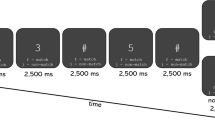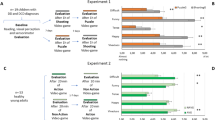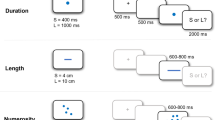Abstract
In many daily situations, balance control is associated with a cognitive activity such as reading or a simple calculation. The objective of this study was to investigate the relationship between these two specific human activities, especially the influence of visual cues and support surface stability on body sway during a calculation task. A Sensory Organization Test, which can disrupt or suppress sensory inputs, was performed on 71 healthy young adults. The evaluations were performed both with and without mental arithmetic tasks which consisted of backward counting by three or thirteen. Our results showed that the addition of a calculation task induced an increase in body sway only when visual cues were available. They also showed the same instability effect of the support surface on the amount of body sway no matter what the associated cognitive task was. Moreover, no difference in body sway was observed between the two calculation tasks no matter what the visual context and/or the stability of the support surface were. We suggest that focusing on fulfilling the requirements of the mental calculation challenge may be responsible for the increase in body sway. This increase may be related to the use of oculomotor activity as unintentional attempts to increase arousal by self-generated body movement. Thus, this activity facilitates information processing rather than minimizing unbalance by a visual anchor point.


Similar content being viewed by others
References
Barra J, Bray A, Sahni V, Golding JF, Gresty MA (2006) Increasing cognitive load with increasing balance challenge: recipe for catastrophe. Exp Brain Res 174:734–745
Berger L, Bernard-Demanze L (2011) Age-related effects of a memorizing spatial task in the adults and elderly postural control. Gait Posture 33:300–302
Bernier P-M, Burle B, Vidal F, Hasbroucq T, Blouin J (2009) Direct evidence for cortical suppression of somatosensory afferents during visuomotor adaptation. Cereb Cortex 19:2106–2113
Chong RK, Mills B, Dailey L, Lane E, Smith S, Lee KH (2010) Specific interference between a cognitive task and sensory organization for stance balance control in healthy young adults: visuospatial effects. Neuropsychologia 48:2709–2718
Dault MC, Geurts AC, Mulder TW, Duysens (2001) Postural control and cognitive task performance in healthy participants while balancing on different support-surface configurations. Gait Posture 14:248–255
Goodrich BG (2010) We do, therefore we think: time, motility, and consciousness. Rev Neurosci 21:331–361
Huxhold O, Li SC, Schmiedek F, Lindenberger U (2006) Dual-tasking postural control: aging and the effects of cognitive demand in conjunction with focus of attention. Brain Res Bull 14:294–305
Jamet M, Deviterne D, Gauchard GC, Vançon G, Perrin PP (2004) Higher visual dependency increases balance control perturbation during cognitive task fulfillment in elderly people. Neurosci Lett 359:61–64
Jamet M, Deviterne D, Gauchard GC, Vançon G, Perrin PP (2007) Age-related part taken by attentional cognitive processes in standing postural control in a dual-task context. Gait Posture 25:179–184
Kahneman D (1973) Attention and effort. Prentice-Hall, Englewood Cliffs
Kerr B, Condon SM, McDonald LA (1985) Cognitive spatial processing and the regulation of posture. J Exp Psychol Hum Percept Perform 11:617–622
Lion A, Spada RS, Bosser G, Gauchard GC, Anello G, Bosco P, Calabrese S, Iero A, Stella G, Elia M, Perrin PP (2013) “Postural first” principle when balance is challenged in elderly people. Int J Neurosci. doi:10.3109/00207454.2013.864288
Maylor EA, Allison S, Wing AM (2001) Effects of spatial and nonspatial cognitive activity on postural stability. Br J Psychol 92:319
McNevin NH, Wulf G (2002) Attentional focus on supra-postural tasks affects postural control. Hum Mov Sci 21:187–202
Meyer C, Gauchard GC, Deviterne D, Perrin PP (2007) Cognitive task fulfillment may decrease gaze control performances. Physiol Behav 92:861–866
Nashner LM, Peters JF (1990) Dynamic posturography in the diagnosis and management of dizziness and balance disorders. Neurol Clin 8:331–349
Pellecchia GL (2003) Postural sway increases with attentional demands of concurrent cognitive task. Gait Posture 18:29–34
Remaud A, Boyas S, Caron GA, Bilodeau M (2012) Attentional demands associated with postural control depend on task difficulty and visual condition. J Mot Behav 44:329–340
Riley MA, Baker AA, Schmit JM, Weaver E (2005) Effects of visual and auditory short-term memory tasks on the spatiotemporal dynamics and variability of postural sway. J Mot Behav 37:311–324
Roerdink M, De Haart M, Daffertshofer A, Donker SF, Geurts ACH, Beek PJ (2006) Dynamical structure of center-of-pressure trajectories in patients recovering from stroke. Exp Brain Res 174:256–269
Shumway-Cook A, Woollacott M, Kerns KA, Baldwin M (1997) The effects of two types of cognitive tasks on postural stability in older adults with and without a history of falls. J Gerontol A Biol Sci Med Sci 52:M232–M240
Stins JF, Beek PJ (2012) A critical evaluation of the cognitive penetrability of posture. Exp Aging Res 38:208–219
Stins JF, Michielsen ME, Roerdink M, Beek PJ (2009) Sway regularity reflects attentional involvement in postural control: effects of expertise, vision and cognition. Gait Posture 30:106–109
Stoffregen TA, Smart LJ, Bardy BG, Pagulayan RJ (1999) Postural stabilization of looking. J Exp Psychol Hum Percept Perform 25:1641–1658
Stoffregen TA, Hove P, Bardy BG, Riley M, Bonnet CT (2007) Postural stabilization of perceptual but not cognitive performance. J Mot Behav 39:126–138
Stoffregen TA, Villard S, Chen F-C, Yu Y (2011) Standing posture on land and at sea. Ecol Psychol 23:19–36
Teasdale N, Bard C, LaRue J, Fleury M (1993) On the cognitive penetrability of posture control. Exp Aging Res 19:1–13
Teel EF, Register-Mihalik JK, Troy Blackburn J, Guskiewicz KM (2013) Balance and cognitive performance during a dual-task: preliminary implications for use in concussion assessment. J Sci Med Sport 16:190–194
Woollacott M, Shumway-Cook A (2002) Attention and the control of posture and gait: a review of an emerging area of research. Gait Posture 16:1–14
Yu Y, Yank JR, Katsumata Y, Villard S, Kennedy RS, Stoffregen TA (2010) Visual vigilance performance and standing posture at sea. Aviat Space Environ Med 81:375–382
Acknowledgments
The authors would like to give special thanks to Julie Saubion-Stockwell and Gilles Petitdemange (Université de Lorraine) for their precious advice in the final read-through of this manuscript.
Conflict of interest
The authors declare that they have no conflict of interest.
Author information
Authors and Affiliations
Corresponding author
Rights and permissions
About this article
Cite this article
Ceyte, H., Lion, A., Caudron, S. et al. Does calculating impair postural stabilization allowed by visual cues?. Exp Brain Res 232, 2221–2228 (2014). https://doi.org/10.1007/s00221-014-3913-1
Received:
Accepted:
Published:
Issue Date:
DOI: https://doi.org/10.1007/s00221-014-3913-1




